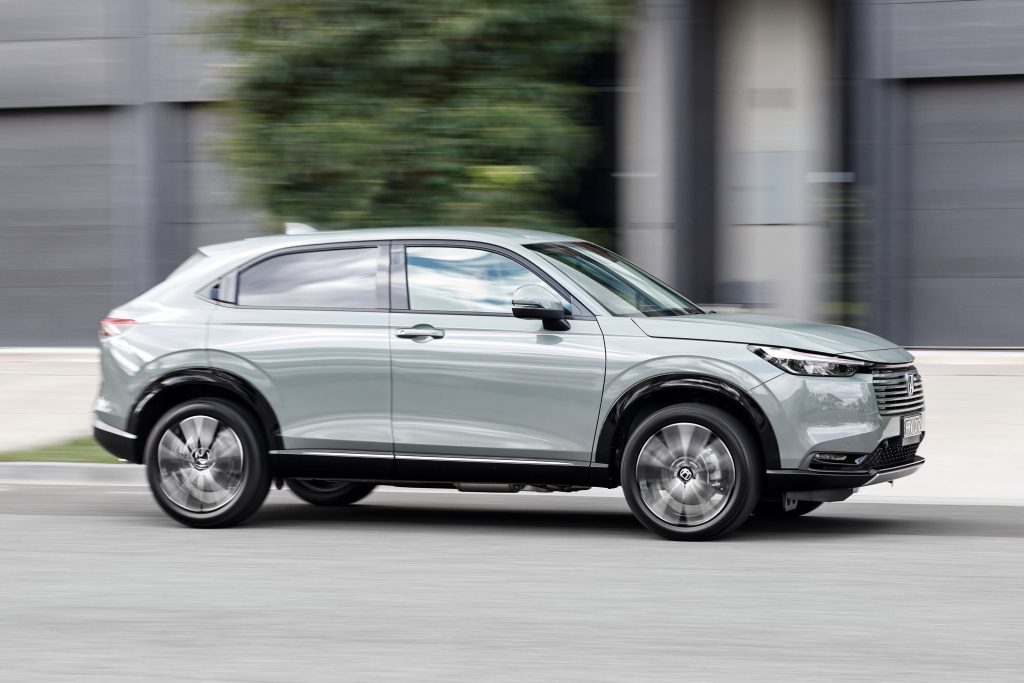

**Direct Comparison: Honda HR-V e:HEV vs. Haval Jolion HEV**
In the swiftly changing automotive world, hybrid cars have gained significant traction thanks to their fuel efficiency and lower environmental footprint. Two prominent players in the hybrid SUV category are the Honda HR-V e:HEV and the Haval Jolion HEV. This article offers a direct comparison of these two vehicles, highlighting essential factors such as design, performance, technology, and safety features.
**Design and Aesthetics**
The Honda HR-V e:HEV features a stylish and contemporary design, marked by its coupe-like shape and striking front grille. Its aerodynamic profile and compact size make it a desirable option for city dwellers. The interior is equally remarkable, providing a minimalist yet practical arrangement with quality materials and a roomy cabin.
Conversely, the Haval Jolion HEV showcases a sturdier and more brawny look, featuring a prominent front grille and sharp LED headlights. The Jolion’s interior prioritizes comfort and technology, exhibiting a modern design with generous space for passengers and luggage.
**Performance and Efficiency**
Under the hood, the Honda HR-V e:HEV comes with a 1.5-liter Atkinson-cycle petrol engine complemented by two electric motors, generating a combined output of around 129 horsepower. The e:HEV system maximizes fuel efficiency, ensuring smooth transitions between electric and hybrid modes, making it well-suited for both urban and long-distance driving.
In contrast, the Haval Jolion HEV is equipped with a 1.5-liter turbocharged petrol engine paired with an electric motor, achieving a total output of approximately 189 horsepower. This configuration delivers a more dynamic performance, appealing to those who emphasize acceleration and driving experience. However, it may not achieve the same fuel efficiency as the HR-V in city environments.
**Technology and Connectivity**
Both models come equipped with a host of cutting-edge technology features. The Honda HR-V e:HEV features an intuitive infotainment system with a touchscreen, Apple CarPlay, Android Auto, and a variety of driver-assistance features including adaptive cruise control and lane-keeping assist.
The Haval Jolion HEV likewise provides a comprehensive infotainment setup with a larger touchscreen, smartphone compatibility, and sophisticated driver-assistance systems. Furthermore, the Jolion includes a digital instrument cluster, enhancing the overall driving interaction.
**Safety Features**
Safety is a key concern for both brands. The Honda HR-V e:HEV incorporates Honda Sensing, a collection of safety features that includes collision mitigation braking, road departure mitigation, and traffic sign recognition. These features enhance its safety rating and give drivers and passengers greater peace of mind.
The Haval Jolion HEV also presents a variety of safety technologies such as autonomous emergency braking, blind-spot monitoring, and rear cross-traffic alert. These features ensure a secure driving experience, meeting contemporary safety standards.
**Conclusion**
In summary, the decision between the Honda HR-V e:HEV and the Haval Jolion HEV largely hinges on personal preferences and priorities. The HR-V e:HEV is a fantastic choice for those pursuing a balance of efficiency, modern aesthetics, and advanced safety systems. Meanwhile, the Jolion HEV is appealing to drivers who prioritize a more robust performance and a technology-rich cabin. Both vehicles exemplify the rising trend toward hybrid options, showcasing a vision for the future of eco-friendly transportation.






